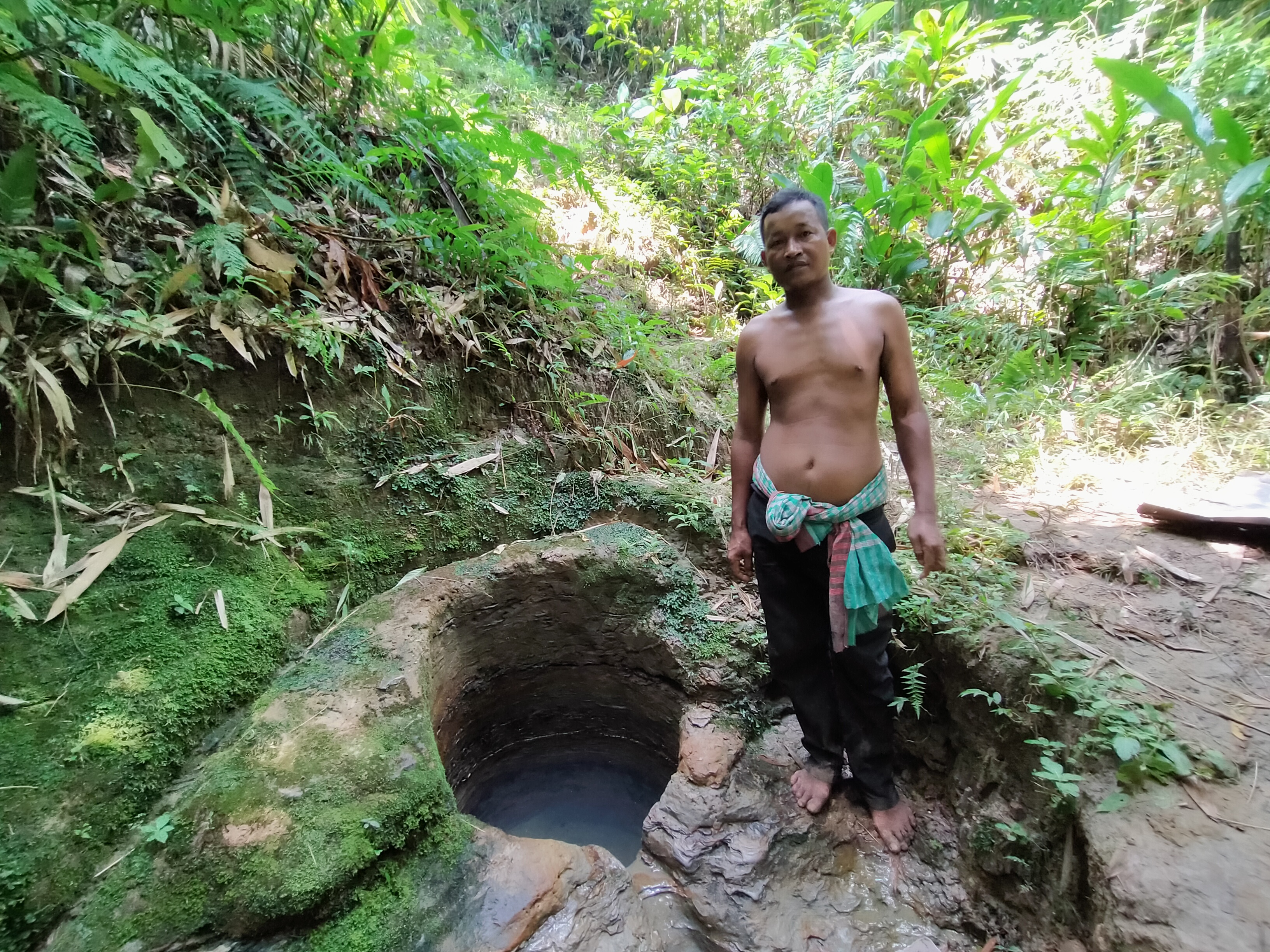For the indigenous communities of Tripura, officially recognised as 'tribes,' 'tribal communities,' or 'Scheduled Tribes' under Article 342 of the Indian Constitution, and some specific groups like the Reang tribe classified as 'Primitive Vulnerable Tribal Groups' (PVTG), water holds sacred and spiritual significance. This reverence is evident in the water rituals and ceremonies that these communities continue to practice, albeit to a lesser extent today.
Historically and socially marginalised, these communities endure severe poverty, face numerous injustices, and struggle to access clean drinking water. In the past, they had abundant water sources and easy access to safe drinking water, reflecting their genuine commitment to sustainability with a community-focused approach, driven by their profound respect for water and water bodies. However, today, the issue of secure access to clean drinking water for these communities remains largely unaddressed and often overlooked.
When I embarked on my first endeavour as a storyteller for 'NE India Water Talk,' an archival platform for water stories in Northeast India in 2021, I faced a dilemma. Unsure of the kind of water story I wished to write, I contemplated between discussing water scarcity or delving into the eco-cultural relationship that tribes, including my own community, the Molsom tribe in Tripura, share with water.
This uncertainty may have stemmed from my failure to recognise water shortages in my own village or a lack of personal exposure to water crises. However, my perspective shifted as I began to explore the sources of drinking water for hill tribes in Tripura, apart from my own community. I discovered that the rivulets, springs, and streams in their villages had dried up, leaving them reliant on government-provided alternative water sources or makeshift dug-up mud wells along riverbanks and rivulets, wherever a minimal water supply could be found.
For instance, during a visit to a remote village to cover urban garbage issues, I noticed that the village forest land had been transformed into a landfill. Here, the hill tribes' primary source of drinking water was a makeshift well adjacent to ponds, serving nearly 35 families. This experience piqued my curiosity regarding the specific drinking water facilities provided to the tribes residing in the hilly uplands, whom I refer to as the 'Hill Tribes' of Tripura.
What I have observed thus far regarding the alternative water sources provided, such as tube wells, deep-well hand pumps (Mark II), and water tanks, is that they are mostly situated along roadsides, but unfortunately, they are often in a state of disrepair, non-functionality, underutilisation, and lack of maintenance.
During a recent journey along the NH8 national highway, which traverses the Atharamura hill, the highest hill range, I observed several abandoned water containers, such as pots, drums, and bottles, left on the roadside, unattended. To me, these empty vessels symbolise the prolonged wait for water and serve as a stark testament to water insecurity. As a frequent traveller on this route, I would stop by these containers, hoping to engage with someone to satisfy my curiosity. Unfortunately, no one appeared, illustrating the enduring wait that the hill tribes must have endured for water provision.
This grim situation is prevalent among the hilly areas' inhabitants, particularly the marginalised hill tribes in Tripura. In this specific instance, the unauthorised commencement and lack of maintenance during the construction of national highways have led to the destruction of vital water sources, including bore wells and springs, which the hill tribes relied upon for their drinking water. Ironically, the hill tribes do not receive adequate alternative drinking water sources, despite the state's claims that the destroyed water sources were located on government land within Reserved Forest areas. The hill tribes possess registered land entitlements under the Forest Rights Act 2006, adding to the complexity of the situation.
Nevertheless, the hill tribes, particularly women, persistently stage protests along the national highway, appealing to the relevant authorities for access to alternative drinking water sources. As a result, a water tanker truck now makes a daily trip to provide temporary drinking water to the affected hill tribe families, at least until a permanent alternative water source is established. However, frequently, once the assigned project is completed, the hill tribes find themselves without access to clean water, despite promises, as the installed tube wells, water tanks, and other water sources often remain broken.
Contemplating this, I wondered if these temporary solutions were merely a way to provide water to the hill tribes after their forests and natural resources had been exploited through timber extraction and resource extraction drilling projects, thereby contaminating the rivulets and water bodies they rely on for drinking water. It's undeniable that the issue of safe drinking water availability in remote hill tribe areas of Tripura is a pressing concern.
However, the ongoing execution of development projects, with little regard for the well-being of the hill tribes, has exacerbated their water insecurity, rendering them the most adversely affected group in the ongoing water crisis in Tripura.
The subsequent images will illustrate the real water security challenges confronted by the hill tribes in Tripura.







Author
Thomas Malsom is a Research Scholar at North-Eastern Hill University, Shillong.
/articles/photoessay-water-insecurity-among-hill-tribes-tripura